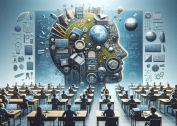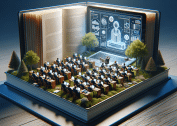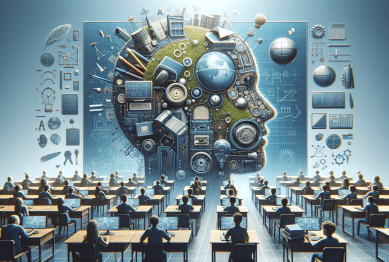Discover how bilingual education transforms learning, shaping brighter futures through cognitive growth, cultural appreciation, and lifelong skills. This guide explores bilingual classrooms, the role of technology in dual-language learning, and what families can expect from these dynamic educational settings.
The Foundation of Bilingual Education
Bilingual education is more than just learning in two languages. It’s an approach that immerses students in both their native language and a second language throughout the school day. This educational model continues to gain traction worldwide as research highlights its lasting value. Dual-language programs encourage students not only to speak and write in a new tongue but also to think critically across multiple cultures and perspectives. The power of language goes beyond communication; it structures thought, cultural awareness, and even shapes how learners view their community. Schools that implement effective bilingual strategies build bridges that connect family heritage with opportunity, making this a central topic in education and society today. Experts show that early exposure to bilingual education can prime a child’s brain for flexible thinking and deeper comprehension in all subjects (Source: https://www.ed.gov).
Programs differ significantly, from transitional models to full dual-language immersion. Some aim to develop proficiency in the primary language before moving to a second language, while others blend instruction evenly between both languages from the outset. The structure often depends on local community needs and linguistic makeup. For instance, schools in multicultural urban areas may offer a Spanish-English track, while others might focus on Mandarin, French, or Arabic. Regardless of the language combination, research shows that structured bilingual education nurtures strong literacy, math, and science foundations. Learners benefit from code-switching skills, which help boost memory retention, problem-solving, and adaptability in changing environments (Source: https://www.cal.org).
Putting bilingual education into practice requires thoughtful curriculum design, teacher training, and community involvement. In many programs, cultural traditions are honored and integrated, helping children forge a positive sense of identity. Parental involvement also shapes program success, as collaboration between educators and families supports language development both in the classroom and at home. Over time, students in dual-language settings often outperform their monolingual peers in academic and social metrics, demonstrating greater empathy and global readiness (Source: https://www.colorincolorado.org).
Key Cognitive Advantages of Bilingual Learning
The cognitive impact of bilingual education is widely documented. Mastering two languages trains the brain in unique ways, enhancing executive function—the set of skills involved in planning, focusing attention, and processing information. Multiple studies show bilingual students display heightened abilities in tasks requiring multitasking, creative thinking, and mental flexibility. This cognitive stretch starts early, with even young children showing improved memory and reasoning after being exposed to dual-language environments. Importantly, these benefits are not confined to language learning alone; they extend across disciplines, including mathematics and the sciences (Source: https://www.nichd.nih.gov).
Being fluent in multiple languages also appears to delay the onset of age-related cognitive decline. Studies of older bilingual adults reveal higher resistance to dementia symptoms. This resilience is linked to the mental agility fostered by years of switching between language systems and interpretations. In childhood and adolescence, this translates to greater adaptability and resourcefulness. Schools and policymakers are increasingly aware that integrating bilingual models prepares students for lifelong brain health while providing immediate classroom benefits.
Perhaps most fascinating is how bilingual brains manage interference. People fluent in two or more languages learn to filter out irrelevant cues faster, focusing only on central tasks. This focus leads to improvements in test performance and social interactions. Classroom teachers often note bilingual students’ keen listening abilities and their talent for interpreting meaning from context—two skills vital for academic achievement and real-world communication alike.
Cultural Connections and Social Advantages
Bilingual education doesn’t just sharpen the mind—it opens doors to deeper cultural appreciation and social engagement. Dual-language programs immerse students in customs, stories, celebrations, and values from multiple traditions, expanding their worldview. This multicultural exposure naturally fosters curiosity, respect, and empathy. Young people in such programs are often more confident navigating diverse settings, from community events to future workplaces. Knowing more than one language equips students to communicate comfortably with a wider range of people, breaking down barriers and encouraging collaboration (Source: https://www.gse.harvard.edu).
Beyond the classroom, bilingualism can reinforce a sense of belonging and pride in one’s heritage. It helps families maintain cultural continuity across generations and encourages participation in community life. For immigrant families, these programs offer a crucial bridge between home traditions and mainstream society—a benefit that extends far beyond academic achievement. Students also develop a sense of responsibility, understanding the value of preserving and sharing languages in a rapidly changing world.
Schools often serve as cultural meeting points, where traditions are celebrated and histories are shared. This approach plants the seeds of social justice and inclusivity. When students see their identities reflected in the curriculum, engagement and motivation soar. Moreover, being able to communicate in multiple languages means being equipped to contribute meaningfully to global conversations, whether in college, careers, or travels.
The Role of Technology in Bilingual Classrooms
Technology is revolutionizing bilingual education. Interactive applications, digital storytelling, and online language exchanges are all reshaping how students develop proficiency. Schools leverage these tools to create tailored learning experiences. For example, language-learning apps use gamification to make practicing new words and phrases fun and individualized. Virtual exchanges connect students with native speakers from other countries, making language practice authentic and engaging. Classrooms also employ media, from bilingual videos to podcasts, to reinforce listening and comprehension skills in dynamic contexts (Source: https://www.edutopia.org).
Remote and hybrid learning has especially accelerated the adoption of educational technology. With access to virtual libraries, automatic translation, and artificial intelligence-based assessment tools, students can explore language at their own pace and revisit materials as needed. Teachers benefit, too—technology streamlines lesson planning, enables real-time feedback, and opens doors to international collaborations. In this evolving landscape, equitable access to devices and internet connectivity remains a key challenge, prompting districts to seek creative partnerships and funding sources.
As digital literacy becomes essential, blending it with language education prepares students for both academic success and the workforce. However, technology is most powerful when used as part of a balanced approach. Research encourages thoughtful integration alongside traditional play, discussion, and hands-on projects. Ultimately, bilingual education supported by digital innovation offers a richer, more personalized learning journey for every student.
Challenges and Practical Considerations for Families
While benefits are clear, starting a child in bilingual education raises many questions for parents and caregivers. Families wonder about academic workload, long-term language retention, and possible delays in achieving fluency in either language. Evidence generally supports that initial struggles—such as temporary confusion or slower progress in vocabulary—are outweighed by future advantages. Persistence and support make the difference. Educators recommend sharing books, music, and family conversations in both languages to encourage development outside school hours (Source: https://www.aap.org).
Social factors can affect the experience, too. Some children may feel self-conscious or face misconceptions about bilingualism, but schools with a strong community ethos help build resilience. Peer groups, after-school clubs, and school events that celebrate diversity foster pride and a positive attitude toward learning. Families are encouraged to ask questions, stay involved, and connect with teachers or coordinators for ongoing guidance.
Finally, logistical concerns—like program availability or transportation—can play a role in accessing these opportunities. Partnerships among schools, local governments, and nonprofits aim to broaden program reach, especially in underserved communities. Participating fully in bilingual education involves a commitment to open-mindedness, persistence, and a belief in long-term rewards. Every child’s experience is unique, but research and lived experiences strongly suggest the journey is worth it.
Lifelong Benefits Beyond the Classroom
Bilingualism remains an asset that pays dividends lifelong. In college admissions and the job market, dual-language skills distinguish candidates and unlock international pathways. Employers increasingly value adaptability, cultural literacy, and communication abilities—all fostered by bilingual education. This advantage is evident both within local communities and across global platforms. Knowing a second or third language may also open avenues in translation, diplomacy, healthcare, and beyond, where communication diversity is crucial (Source: https://www.actfl.org).
Beyond tangible opportunities, maintaining multiple languages encourages lifelong learning habits. Bilingual adults often seek out cross-cultural exchanges, travel more confidently, and engage actively in civic life. They become connectors and innovators, navigating a shifting world with confidence and empathy. These qualities shape strong communities, resilient economies, and vibrant cultural landscapes. In short, bilingual education sets up graduates for meaningful, engaged lives—wherever they go.
Ultimately, fostering bilingualism is an investment in future generations. Schools, families, and communities that prioritize language diversity build foundations for understanding and collaboration in an interconnected world. The journey may require dedication, but the lasting benefits—personal, academic, and societal—are difficult to overstate. Bilingual education stands out as a powerful force for growth and success at every life stage.
References
1. U.S. Department of Education. (n.d.). English Learners. Retrieved from https://www.ed.gov/oela/english-learners
2. Center for Applied Linguistics. (n.d.). Benefits of Bilingualism. Retrieved from https://www.cal.org/resource-center/briefs-digests/benefits-of-bilingualism
3. Colorín Colorado. (n.d.). What is Bilingual Education? Retrieved from https://www.colorincolorado.org/educators/bilingual-education/what-is
4. National Institute of Child Health and Human Development. (n.d.). Reading and Cognitive Processes in Bilingual Children. Retrieved from https://www.nichd.nih.gov/newsroom/news/122015-bilingual
5. Harvard Graduate School of Education. (n.d.). Dual Language Education as a Pathway to Equity. Retrieved from https://www.gse.harvard.edu/news/uk/18/08/dual-language-education-pathway-equity
6. American Academy of Pediatrics. (n.d.). Bilingual Children: Guidance for Families. Retrieved from https://www.aap.org/en/patient-care/healthy-children/healthy-living/family-life/supporting-bilingual-children









